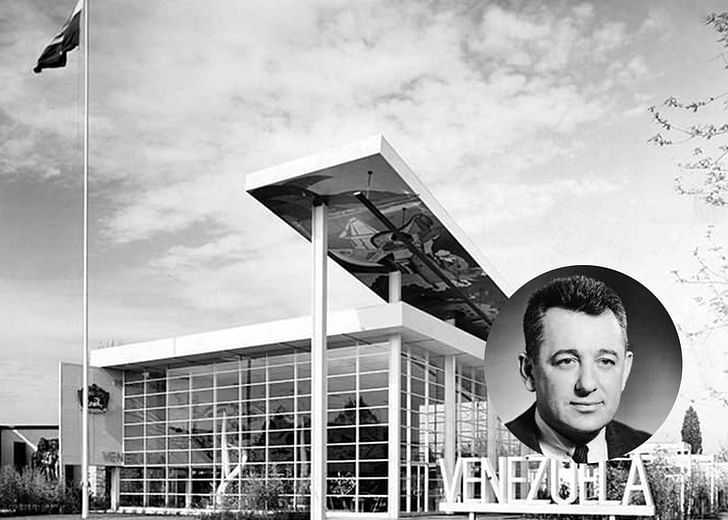

From the Ground Up is a series on Archinect focused on discovering the early stages & signs of history's most prolific architects. Starting from the beginning allows us to understand the long journey architecture takes in even the formative of hands and often, surprising shifts that occur in its journey. These early projects grant us a glimpse into the early, naive, ambitious and at points rough edges of soon to be architectural masters.
In this installment we look at the work of Gordon Bunschaft, a seminal member at SOM for over 40 years.
SOM is synonymous with architecture, with images of architects leaning over their desks in black ties and white shirts, and with an army of creativity that had little to no contemporary comparison. Their list of buildings span decades and the firm is responsible for many of the most significant buildings in the world today. From the Beinecke Rare Book and Manuscript Library to the Lever House in New York, SOM has built some extraordinary work.
While we would like to think that Louis Skidmore, Nathaniel Owings, and John O. Merrill were the key elements to many of these works, a certain face comes forward as a remarkable history maker from within SOM and that would be Gordon Bunshaft.
Gordon would joke that the only reason the firm did not have his name is so that it would not come to be known as S.O.B.
Gordon Bunshaft joined SOM in 1937 and remained for more than 40 years. He produced a long portion of the early works that would cement SOM to what it is today and in doing so, marked his territory as well. Gordon was a man of his time and one who looked to find delight in its existence. He was a man of his era and an embodiment of the industry that was exploding around him; from the ideologies to the construction means, it all aligned perfectly with Gordon's approach to work. It is said that Gordon would joke that the only reason the firm did not have his name is so that it would not come to be known as S.O.B.
One of his earliest works was part of the development of the 1939 World's Fair. The theme that year was the "The World of Tomorrow," which coincided with Bunshaft's journey to discover his voice in his contemporary environment. In the design of the Venezuelan Pavilion for the World's Fair, Bunshaft began to declare his architecture project with a capital 'P'. This project is where he first expressed his distinctive approach to design and began to show the creation of the architectural types that would become synonymous with SOM's visual appearance.
The pavilion was an airy, glass rectangle, the walls of which were supported by thin columns of steel along the façade, and a slab canopy which tilted upward at a rakish angle , extending beyond the pavilion. Easily the best structure Skidmore’s office produced for the fair, it would be recognized as second perhaps only to Oscar Niemeyer’s Brazilian Pavilion. It is clear to see how Bunshaft became the main figure for SOM at the time and why he would go on to coordinate and supervise the majority of SOM's projects that we hold to the highest regard.
While Gordon never did get his name on the wall, SOM would not be the powerhouse of modernist design it is today had Gordon not been a part of the company to start with.
Anthony Morey is a Los Angeles based designer, curator, educator, and lecturer of experimental methods of art, design and architectural biases. Morey concentrates in the formulation and fostering of new modes of disciplinary engagement, public dissemination, and cultural cultivation. Morey is the ...
2 Comments
When I first learned about architecture in high school my teacher joked that SOM might as well stand for "School of Mies". Bunshaft's take was, of course, sharper, and just as apt.
I started out at SOM-SF, and this is one of the projects I worked on - US embassy in Bejing
Block this user
Are you sure you want to block this user and hide all related comments throughout the site?
Archinect
This is your first comment on Archinect. Your comment will be visible once approved.